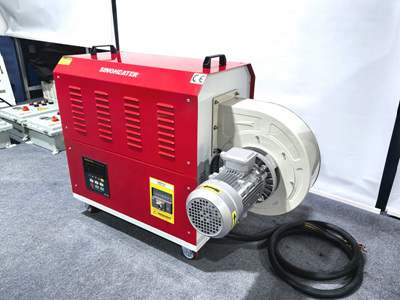High-humidity environments (relative humidity > 70%) can lead to problems such as metal corrosion inside the hot air blower, decline in electrical insulation performance, and short circuits in the circuit, seriously affecting the service life and safety of the equipment. The following provides systematic solutions from three aspects: short-term emergency response, long-term moisture-proof maintenance, and protection of key components.
First, short-term emergency response (within 24 hours after use)
1. Equipment power-off and cleaning
Immediate power outage
Cut off the power supply to prevent short circuits or leakage caused by moisture in the circuit.
External cleaning
Wipe the outer shell with a dry cloth to remove water droplets and dirt on the surface and prevent moisture from seeping into the interior.
Inlet/Outlet treatment:
Blow the air ducts with compressed air to remove accumulated water and dust and prevent the growth of mold.
2. Internal dehumidification
Natural ventilation
Move the hot air blower to a dry and well-ventilated place (such as indoors), open the casing (if detachable), and let it air dry naturally for 24 hours.
Heating and dehumidification
Turn on the equipment and run it at low power for 10 to 15 minutes to accelerate water evaporation by utilizing the internal heat (make sure there is no risk of short circuit).
Desiccant assistance:
Place silica gel desiccants (500g per cubic meter of space) inside the equipment to absorb the residual moisture.
3. Inspection of electrical components
Insulation resistance test
When using a megohmmeter to measure the insulation resistance of the motor windings and control circuits, it should be ≥1MΩ (standard value).
Terminal block fastening
Check and tighten all the terminal blocks to prevent poor contact due to oxidation caused by moisture.
Second, long-term moisture-proof maintenance (carried out regularly)
Moisture-proof design renovation
Shell sealing upgrade:
Apply waterproof sealant (such as polyurethane sealant) at the joints. It is recommended to raise the IP protection level to IP54 or above.
Moisture-proof for ventilation openings
Install moisture-proof and ventilation filters (such as louvers with desiccants) to balance the requirements of ventilation and moisture-proofing.
Pre-installed heating tape:
Wrap self-limiting heating tapes around key components (such as motors and control boxes) to maintain the ambient temperature above 5℃.
2. Storage environment optimization
Storage location selection:
Avoid direct contact with the ground and walls. Use trays or brackets to raise the equipment.
Environmental control
The storage area is equipped with dehumidifiers to maintain a relative humidity of less than 60%. Or place a bag of quicklime (1kg per cubic meter) to absorb moisture.
Third, targeted protection for key components
1. Moisture-proof for the motor
Moisture-proof coating
Spray three-proof varnish (such as acrylic resin) on the surface of the motor windings to block moisture.
Bearing lubrication
Use water-resistant grease (such as lithium-based grease) and replenish it every six months.
2. Moisture-proof for the electrical control box
Sealing and heating
The control box door is equipped with a sealing strip, and a small heater (with a power of 50 to 100W) is installed inside.
Line protection
The critical circuits are covered with moisture-proof heat shrink tubes, and waterproof glue is applied to the joints.
3. Moisture-proof for the sensor
Protection level upgrade
The temperature/humidity sensor adopts a protection grade of IP67 or above and is equipped with a waterproof breathable membrane.
Calibration and replacement
Calibrate the sensor every six months. If the error is greater than ±3%, replace it.
Fourth, emergency handling of faults
Safety Precautions
Do not operate with power on:
Power must be cut off before any moisture-proof treatment to avoid the risk of electric shock.
Explosion-proof requirements:
If used in flammable and explosive environments, explosion-proof hot air blowers should be selected and the use of open flames for dehumidification should be avoided.
Fifth, Summary
The moisture-proof treatment of hot air blowers in high-humidity environments should follow the principle of “prevention first, emergency response second”. Short-term emergency response can quickly eliminate moisture, long-term moisture-proof maintenance can reduce the failure rate, and targeted protection for key components can enhance reliability. It is recommended to formulate personalized moisture-proof plans based on the frequency of equipment usage and environmental humidity, and regularly train operators to master moisture-proof skills. If the equipment frequently experiences damp malfunctions, it is recommended to upgrade to a moisture-proof hot air blower (such as IP65 protection level + built-in heating module).




